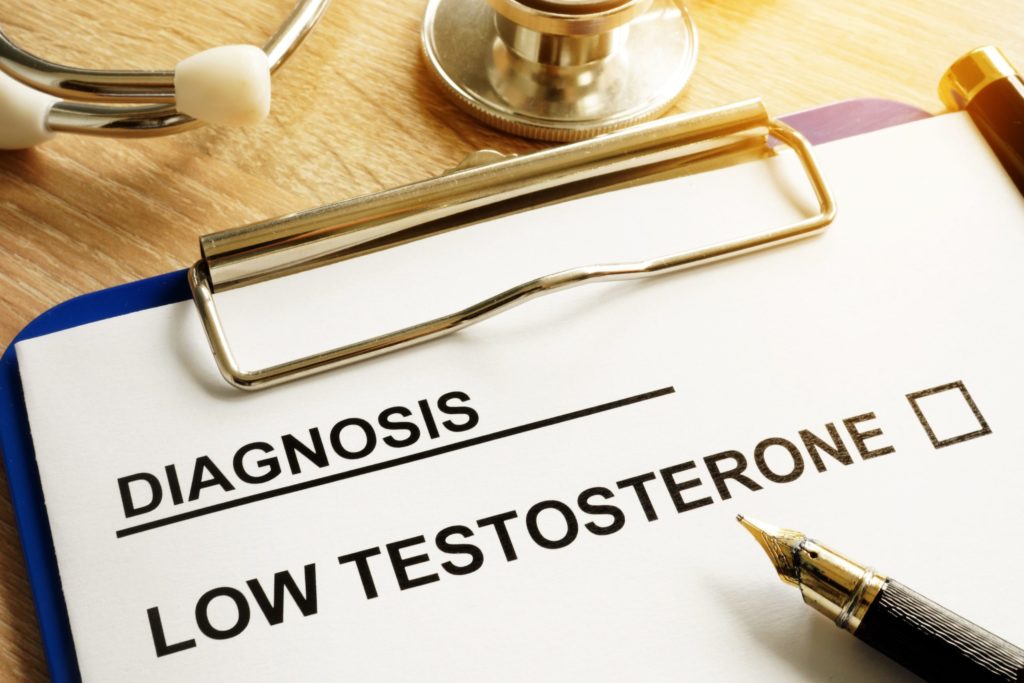What Causes Low “T” Testosterone (Male Hypogonadism)

Why causes low testosterone? Injury, radiation, chemotherapy, and prostate cancer can affect testosterone levels.
Testosterone naturally starts to declines at age 30 and continues to decline by 1.6% per year. As men age, It becomes more prevalent. By the time men are in their fifties about 12% of men have low testosterone. About 19% of men in their 60’s have low testosterone and the older men get the lower testosterone levels.
The American Urologic Association states that a low testosterone level is 300 or less. We often see symptoms in men with levels between 300 – 450 or less. It is important to screen testosterone levels in the 20’s and 30’s so that we have baseline levels to compare to men get older.
Low Testosterone Causes:
Fatigue
Low ambition
Loss of muscle mass
Decreased sexual desire
Loss of body hair
Weight gain
Depression
Erectile Dysfunction
Moodiness/Irritability
How Common Is Low “T”, Testosterone
Low testosterone level is common in 40% of men aged 45 years or older. Testosterone levels fluctuate during the day and can be affected by (BMI) Body Mass Index, certain medications, and infections.
Chronic illness and infections can cause an issue with testosterone production. Lyme disease, fungal infections, mold exposure, and autoimmune diseases lower testosterone levels. This often takes time even after treating the infections to get the testosterone levels back up and in some cases the levels never get back to normal. It is important to seek treatment for these chronic conditions early on and treat the underlying issues to limit the long-term effects.
What Causes Low “T”, Testosterone
Medications
Diabetes
Chemotherapy
Pituitary Gland Issues
Alcohol Abuse
Estrogen Dominance
Inflammatory Conditions
Obesity
Sleep Apnea
Anabolic Steroid Use
Trauma (head)
Sports Injury
How Is Low Testerone Level Diagnosed?
Low testosterone is diagnosed by collecting a morning blood test to measure the testosterone level. It may take several blood tests to determine low testosterone since these levels change throughout the day. The highest level of testosterone is in the morning. Often times it is requested to draw blood at 8 a.m.
How Is Low Testosterone Level Treated?
Low testosterone, is treated with testosterone replacement therapy, which can be given in several different ways.
Intramuscular injection or IM
Testosterone patches, creams, gels, or oils
(Oral testosterone supplementation is not recommended or FDA approved)

What Are The Benefits of Testosterone Replacement
Body fat loss
Increased bone density
Improved mood function
Improved sexual functional
Increased cognitive function
Increased muscle mass